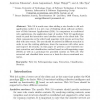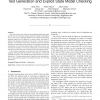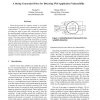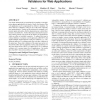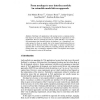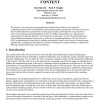KSEM
2010
Springer
13 years 9 months ago
2010
Springer
Web 2.0 is much more than adding a nice facade to old web applications rather it is a new way of thinking about software architecture of Rich Internet Applications (RIA). In compar...
TSE
2010
13 years 9 months ago
2010
— Web script crashes and malformed dynamically-generated web pages are common errors, and they seriously impact the usability of web applications. Current tools for web-page vali...
SEKE
2010
Springer
13 years 9 months ago
2010
Springer
Given the bytecode of a software system, is it possible to automatically generate attack signatures that reveal its vulnerabilities? A natural solution would be symbolically execu...
OOPSLA
2010
Springer
13 years 10 months ago
2010
Springer
Continuation-based Web servers provide advantages over traditional Web application development through the increase of expressive power they allow. This leads to fewer errors and ...
KBSE
2010
IEEE
13 years 10 months ago
2010
IEEE
User-input validators play an essential role in guarding a web application against application-level attacks. Hence, the security of the web application can be compromised by defe...
ICWE
2010
Springer
13 years 10 months ago
2010
Springer
Abstract. We present partial information extraction approach to lightweight integration on the Web. Our approach allows us to extract dynamic contents created by scripts as well as...
ICWE
2010
Springer
13 years 10 months ago
2010
Springer
Sketching web applications with mockup tools is a common practice that improves the process of elicitation and validation of requirements in web applications. However, mockups are ...
CCS
2010
ACM
13 years 10 months ago
2010
ACM
We present the first sound program transformation approach for automatically transforming the code of a legacy web application to employ PREPARE statements in place of unsafe SQL...
CCS
2010
ACM
13 years 10 months ago
2010
ACM
Web applications rely heavily on client-side computation to examine and validate form inputs that are supplied by a user (e.g., “credit card expiration date must be valid”). T...
CN
1998
13 years 11 months ago
1998
We propose a new approach to programming web applications that increases the web's computational power, the web's flexibility, and web programmer productivity. Whereas w...
